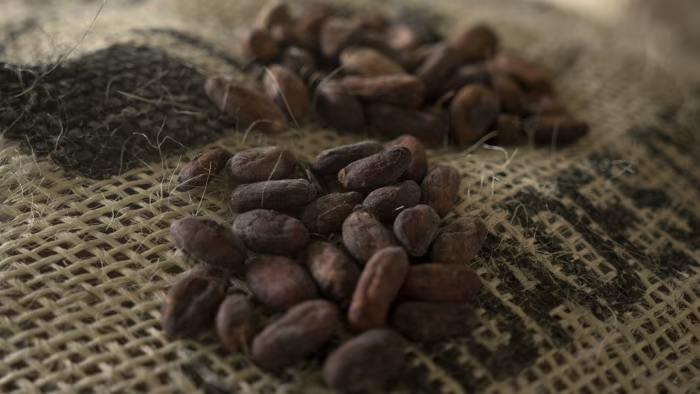Unlock the Editor’s Digest for free
Roula Khalaf, Editor of the FT, selects her favourite stories in this weekly newsletter.
Cocoa prices have tumbled to a 20-month low, bringing to an end a dramatic two-year rally that had driven the market to record highs and squeezed chocolate manufacturers worldwide.
New York cocoa has traded this week at about $6,150 a tonne — down from a December peak of above $12,000. Meanwhile, London prices, which had almost tripled in the opening months of last year, are now down about 58 per cent from their April 2024 peak at $4,262.
Analysts say the retreat reflects a drop-off in consumer demand as a result of the higher prices, as well as expectations of a better crop given improved weather and higher state-guaranteed prices in west Africa. In addition, speculators who had previously been riding the rally have more recently dumped their positions, with many now betting on falling prices.
“We had absolutely ridiculous highs that were not sustainable long term,” said Oran van Dort, a commodity analyst at Rabobank. Prices had been sliding for most of the year, “but especially since mid-August [they have] been really on a gradual down trend”.
The sell-off marks a sharp reversal after a supply shock in 2022 in Ivory Coast and Ghana, which together produce about 60 per cent of the world’s cocoa. Dry weather, disease and years of under-investment by farmers who were unable to afford fertiliser or replace ageing trees sent futures prices soaring.
Those supply fears have now started to ease. Rains have returned after last year’s unusually early dry season, reducing the risk of another failed crop. Forecasters expect the 2025-26 harvest, which began on October 1, to produce a surplus of supply over global demand.
Governments in west Africa have sharply raised the prices they pay farmers, a move expected to boost supply. Ahead of an election, Ivory Coast lifted its guaranteed rate by more than 25 per cent to about $5,000 a tonne in dollar terms, prompting Ghana to raise its own to 58,000 cedis (about $4,600).
Better guaranteed incomes are seen as likely to encourage growers to sell through official channels rather than to smugglers, to prune trees, buy fertiliser and plant new cocoa — moves likely to increase production over time.
“We are already seeing in the countryside the motivation of producers and their families to invest more in cocoa farming,” said Ange-Laurent Gnagne, chief executive of the Scoopega-Scoops co-operative in the Ivorian city of Gagnoa.
Meanwhile, despite the poor crop from the growing season ending on September 30 this year, the market has moved back into a small surplus as the sky-high price of confectionery deterred consumers.
This surplus was “not because we’re now producing more cocoa than we were producing back in those years where we had a deficit. It’s because demand has fallen”, said Jonathan Parkman of Marex brokers.
Chocolate consumption has yet to recover from the price shock of the past two years, which hit demand. Global grindings — a key gauge of cocoa use — had fallen by about 500,000 tons since their peak in 2022, ahead of the supply shock, said Parkman. He added that the biggest drops had come in Asia, Europe and West Africa.
Despite the sharp recent pullback in the market, retail prices remain high. In the Netherlands, an average 100g bar cost more than 35 per cent extra this September compared with the year before, according to Rabobank.
Consumers could expect prices to stop rising but they would not start to come down for at least six months, said Parkman.
Meanwhile, Brussels has delayed for a second time a law that requires companies buying commodities such as cocoa and coffee to prove that they do not originate from deforested areas. The law, which was due to come into force at the end of year, has been postponed by another 12 months, lessening any urgent rush to bring forward imports ahead of the new rules.
But, despite the sharp fall, few in the market expect a return to the pre-2023 era, when New York cocoa traded between $2,000 and $3,000. Supply remains constrained by ageing trees, crop disease and climate risk.
According to research presented at the European Cocoa Forum in Malta last month, “35 per cent of current cocoa production levels in the Ivory Coast may disappear by 2050 . . . 25 per cent due to climate change and 10 per cent due to cacao swollen shoot virus”, said van Dort.
“And the question is, can production losses like that be offset by the rest of the world?” he added.
